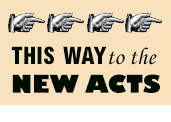Tintype
The TINTYPE, also know as the Ferrotype, a photo printed on an iron plate, was the cheapest and most ubiquitous form of photographer up until the popularity of paper photos. Its popularity continued however, and on the fairgrounds tintype photographers still plied their craft until about 1920.
It first appeared in 1855, peaked in the years between 1861-1871, and waned between 1872-1900.
Early examples were presented in leather folding cases like its predecessors, the Daguerrotype and the ambrotype. Later they were sold in souvenir paper folders, and then sold loose.
Until the late 1860's, tintypes were on blackened metal-- best identified from the back of the image-- but appearing in 1870 were "chocolate" or brown metal tintypes. Brown or 'chocolate' plates as they were known have a distinct hue, though some may be subtle as there were three different tints available.
Tintypes were packaged in cases up to the very early 1860s. Cartouche cards appeared in about 1863. These were thin cards with a window, usually oval, cut out, with an ornate design printed simulating a picture frame. These were only popular for a few years and were seldom used after 1866. Embossed window frames were popular during the civil war, first patented in 1865 and were used into the early 1870s.
Carnival tintypes were extremely popular throughout the 1890s on traveling shows, seaside boardwalks and fairs, but smaller operators continued with the format through about 1920. Tintypes made at the fair or carnival typically show people in festive settings with props, and may be found in a colorful paper sleeves, though many of these today are found loose, as their paper sleeves have deteriorated or they were removed from albums.

